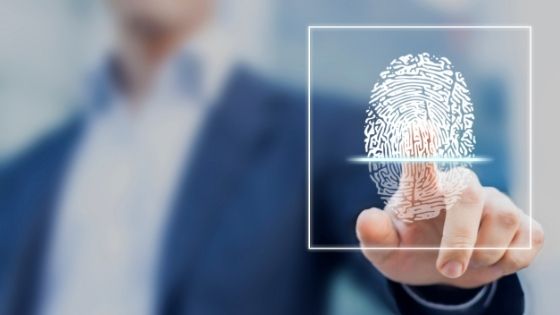The global market for biometrics recorded a staggering 19.08 billion USD in 2020. The number comes as no surprise with online businesses investing more and more in robust systems for validating customer identity. Since biometric technology takes into account unique attributes of a person’s identity like fingerprints, and facial features etc., they offer a better sense of security than traditional methods out there in the market. Identity verification has been totally revamped with the advent of biometrics and this technology is rapidly evolving. Enterprises can now develop business relations with trusted customers by verifying them in minutes irrespective of where they are physically present.


What is Biometric Verification?
The use of automated systems to identify and validate user identity using unique human characteristics is termed as biometric verification. Biometric technology is constantly evolving due to its use cases in major industries. The amount of precision and ease it brings to customer identification makes it a potential game-changer in the market. These advances are not limited to identity information provided by fingerprints, a user’s face or even their eye structures. Today, biometrics using speech and handwritten patterns are becoming increasingly popular in the market.
Why is Biometric Authentication Important?
Today, providing easy and efficient solutions is the best way to acquire customer trust and build on a business. 63% of customers are of the view that a company’s onboarding process determines whether they make a purchase or not. Biometric technology has the ability to provide better usability during the client enrolment process. Apart from this, it also provides a safe and secure channel for users to perform online activities like account opening, and online transactions, etc.
When it comes to identity theft, biometric authentication acts as a safe haven for customers. It helps global companies prevent online fraud and provide customers with a seamless user experience. Cybercriminals are always making efforts to hijack sensitive information to use it for their illicit purposes. Once they acquire the personally identifiable information (PII) of online users, they use it to conduct a wide array of crime such as laundering black money, opening false accounts with the stolen credentials, and issue fake credit cards using the synthetic data.
The biometric authentication process consists of making a user profile against their unique biometric traits. It takes into features such as fingerprints, facial structure, speech and text patterns.
History and Evolution of Biometrics
The advent of biometric identification dates back to the 1800s with the development of Alphonse Bertillon’s biometric identification system in France. This method was adopted with the intent of catching criminals using specific measurements of the body using a classification technique. Another signature and fingerprint recognition system in 1880 by Edward Henry laid the foundation for further advances in biometric technology. It created unique architectures against biometric attributes by mapping them using the “Henry Classification System”, which later replaced Bertillon’s identification system used by law enforcement agencies.
In the 1900s, biometric security systems became more popular with speech recognition and real-time solutions bringing innovation to the table. By 2020, there are many services providers offering online biometric verification to help online businesses onboard their customers effortlessly.
Types of Biometric Solutions
Biometrics take into account various ways and means of authenticating users remotely. Some types of biometrics used for validating customer identities are listed below:
Fingerprint Scanning
The most common method for biometric verification is fingerprint recognition systems. Today, many smartphones come with a fingerprint sensor on their back, or front screen, which work wonders for identity verification. Customers engaging on digital platforms can now enrol themselves by scanning their fingerprint patterns using their mobile devices. This way they can open accounts, shop online and perform many other online operations in minutes.
Facial Recognition
In facial biometric verification, the liveness of the end-user plays a key role in assessing the overall accuracy. The process begins with the user scanning their face through a smartphone camera or webcam on their computer. The facial recognition software running behind the system creates a face map against the user’s identity after running a number of checks for detecting liveness and micro-expressions. Today, facial biometric authentication comes with the power of artificial intelligence which beats fraudsters and their spoofing attacks like 3D masks, eye cut and replay attacks.
Speech and Voice Recognition
Over recent years, the constant rise in AI-based products and services have paved the way for text and speech recognition systems. Solutions built on Natural Language Processing (NLP) have provided utilities like speaker identification, text analysis and classification of different tones and speech patterns. This form of biometric identification comes with a good deal of user convenience.
Today, with speech recognition systems, identification of real and legitimate users is possible that helps online businesses authenticate transactions effortlessly. By taking into account features of a person’s speech like tone, pitch, fluency, and pronunciation, voice-based biometric verification is working wonders in authenticating online users.
Iris-based Biometric Authentication
The Iris is a part of the human eye which is complex and unique because of its natural structures of blood vessels. These patterns are specific to a particular individual and could be used to create a biometric identity against a specific individual. The identity is then used for biometric verification to validate the user over digital platforms or checkpoints with biometric services.
To wrap it up, biometric verification can be performed using a number of technologies like fingerprint scanners, facial biometric recognition, voice identification, and iris and retina based detection. These help online businesses elevate their customer identification process (CIP) and streamline their business operations.

























